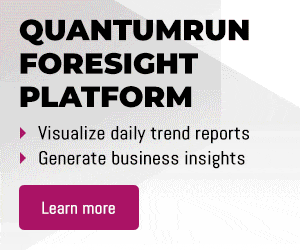Infrastructure-as-a-Service: Renting the digital highway
Infrastructure-as-a-Service: Renting the digital highway
Infrastructure-as-a-Service: Renting the digital highway
- Author:
- April 18, 2025
Insight summary
Infrastructure as a Service (IaaS) is transforming how businesses access and manage computing resources, offering scalable, on-demand infrastructure without the need for expensive hardware. This shift enables faster application development, global market expansion, and more personalized services, but it also presents challenges, such as data privacy concerns and vendor lock-in. As IaaS continues to grow, it is reshaping industries, public services, and job markets while raising important questions about data security, energy consumption, and regulatory policies.
Infrastructure-as-a-Service context
Infrastructure as a Service provides organizations with virtualized computing resources over the internet. Instead of investing heavily in on-premises hardware, businesses can access servers, storage, and networking infrastructure on-demand, paying only for what they use. This flexibility makes IaaS an attractive option for startups and large enterprises, allowing them to scale resources according to fluctuating workloads. Introduced with the launch of Amazon Elastic Compute Cloud (EC2) in 2006, IaaS has evolved into a foundational component of modern IT infrastructure, with major providers such as Amazon Web Services (AWS), Microsoft Azure, Google Cloud Platform (GCP), IBM Cloud, Oracle Cloud Infrastructure, and Alibaba Cloud leading the market.
This service virtualizes traditional data center components, including virtual machines, storage, networking, and containerization. Physical servers are divided into multiple virtual machines, each capable of running its own operating system and applications independently. This structure is managed by cloud service providers who handle the physical hardware, while users maintain control over software and applications. IaaS platforms also support container orchestration tools like Kubernetes, which streamline the deployment and scaling of containerized applications. Furthermore, IaaS solutions often include features such as auto-scaling, load balancing, and disaster recovery, enabling businesses to optimize performance and ensure high availability.
The IaaS market has grown significantly, with projections indicating it will reach $562.53 billion by 2031, growing at a compound annual growth rate of 33.5 percent from 2024 to 2031, according to IBM. This surge is driven by website hosting, big data analytics, artificial intelligence (AI) and machine learning (ML), and high-performance computing (HPC). For instance, e-commerce businesses leverage IaaS to manage seasonal traffic spikes without investing in additional hardware, while data scientists use the platform’s vast computational power to train complex AI models.
Disruptive impact
As more businesses adopt IaaS, users will benefit from faster, more reliable applications and services, including improved streaming platforms, smarter personal assistants, and more responsive gaming experiences. Additionally, IaaS may support personalized services by enabling advanced data analytics, which could lead to tailored shopping recommendations, healthcare insights, or even customized education tools. However, individuals may also face new challenges, particularly regarding data privacy, as more personal information is processed and stored on cloud infrastructure. Users may need to become more aware of how their data is handled and advocate for stricter privacy protections to ensure their personal information remains secure.
Businesses can expand into new markets more easily by deploying applications globally without investing in physical infrastructure. In addition, IaaS enables faster product development cycles, as teams can build and test software without the delays of setting up hardware. Yet, reliance on IaaS increases vulnerability to vendor lock-in, where switching providers becomes difficult due to technical dependencies. Companies may need to strategize on multi-cloud approaches to reduce risks and maintain flexibility.
Public services, such as healthcare and education, can leverage IaaS to improve service delivery by digitizing medical records for faster access or enabling remote learning platforms that reach rural areas. IaaS can also help governments scale resources during emergencies, like natural disasters, by quickly expanding communication networks or data centers. However, the shift to cloud infrastructure raises concerns about data sovereignty, as sensitive government data stored in foreign-owned data centers may face legal and security risks. Policymakers may need to establish stricter regulations around data residency, invest in national cloud infrastructures, or create partnerships with trusted providers to ensure data security and compliance with local laws.
Implications of Infrastructure-as-a-Service
Wider implications of IaaS may include:
- Companies shifting to subscription-based pricing models for IaaS services, leading to more predictable revenue streams and flexible cost structures.
- Governments developing stricter regulations on cross-border data storage, leading to the rise of localized data centers to comply with legal frameworks.
- Businesses relying more on remote teams due to the flexibility IaaS provides, leading to changes in urban planning as demand for office spaces declines.
- Educational institutions expanding access to online learning platforms powered by IaaS, leading to more equitable education opportunities for students in remote areas.
- Increased energy consumption from growing data center usage, leading to higher carbon emissions unless offset by renewable energy investments.
- Small businesses gaining access to high-performance computing through IaaS, leading to more competition in markets previously dominated by large enterprises.
- Cybersecurity threats becoming more sophisticated due to increased cloud reliance, leading to higher demand for skilled security professionals.
- Rapid deployment of smart city technologies enabled by IaaS scalability, leading to more efficient public services but also raising concerns about data surveillance.
- Greater dependence on a few dominant cloud providers, leading to concerns about market monopolies and reduced bargaining power for smaller businesses.
- Shifts in workforce skills toward cloud architecture and management, leading to changes in education curriculums to meet new labor market demands.
Questions to consider
- How could the growing reliance on cloud infrastructure change how you work, learn, or access services daily?
- How might businesses in your community use IaaS to offer better products or services?
Insight references
The following popular and institutional links were referenced for this insight:



